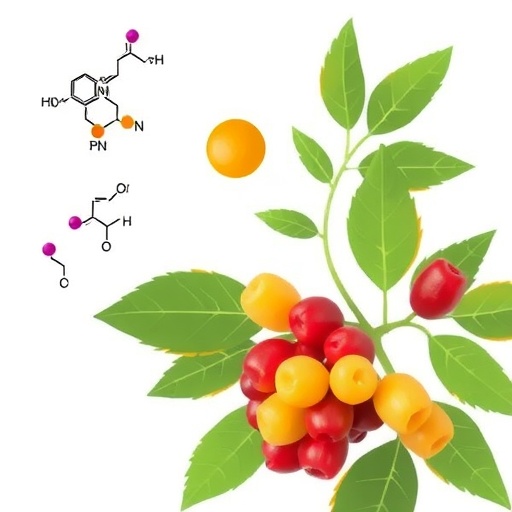A groundbreaking study has unveiled the dynamic clonal evolution of high-grade serous ovarian cancer (HGSOC) during treatment by leveraging the power of cell-free DNA (cfDNA) analysis. This research, published in Nature, harnesses longitudinal plasma samples and single-cell whole-genome sequencing (scWGS) to map the intricate shifts in tumor subpopulations over time. The implications for predicting recurrence and understanding resistance mechanisms are profound, advancing precision oncology in a cancer type notorious for poor prognosis and therapeutic challenges.
By analyzing cfDNA from 18 HGSOC patients with confirmed radiological recurrence, the researchers meticulously tracked variant allele fractions (VAFs) of truncal structural variants (SVs), which represent mutations present in the founding tumor clone. During initial chemotherapy, these truncal SV VAFs declined, reflecting tumor burden reduction and parallel decreases in serum CA-125, a conventional biomarker. Remarkably, all patients showed detectable ctDNA at their first recurrence through these truncal SVs—far exceeding the sensitivity offered by monitoring single gene mutations like TP53 or known tumor suppressors including BRCA1/2 and CDK12. This demonstrates that leveraging truncal SVs as molecular markers enables earlier and more precise detection of residual disease.
The team’s approach to clonal abundance estimation involved aggregating VAFs across clone-specific SVs and adjusting for cancer cell fractions determined via scWGS. Comparisons to high-depth cfDNA whole-genome sequencing validated this methodology, revealing ~92% concordance in identifying dominant clones across multiple samples. Moreover, clone-specific amplifications, visible even at low tumor fractions, confirmed the inferred dominant populations. Correlations between single nucleotide variant (SNV) and SV-based trajectories further solidified these observations, highlighting the robustness and resolution of this multi-faceted approach.
Detailed longitudinal tracking of clonal populations unveiled nuanced therapeutic responses. For instance, patient 044 harbored two main clones at diagnosis: clone B, marked by a high-level ERBB2 amplification, and clone E, lacking this alteration. Front-line chemotherapy effectively eradicated clone E and achieved ctDNA clearance, but clone B persisted as the dominant clone at recurrence, demonstrating resistance to second-line chemo. Intriguingly, subsequent treatment with trastuzumab deruxtecan—an antibody-drug conjugate targeting Her2 (ERBB2)—resulted in complete radiologic remission sustained over three years. This case exemplifies how clonal dynamics informed by cfDNA can identify actionable vulnerabilities fundamental to personalized therapy.
Another compelling example emerged in patient 009, who possessed a germline BRCA1 mutation and derived benefit from PARP inhibitor maintenance. At recurrence, a novel 1.37-kb deletion excising the germline mutation site restored the BRCA1 reading frame—a putative reversion mutation associated with PARP inhibitor resistance. This highlights the tumor’s genomic plasticity during relapse and underscores the critical role of monitoring clonal evolution in anticipating treatment resistance, which often portends poor responses to subsequent therapies.
The investigation also elucidated the role of CCNE1 amplification, a marker linked to chemoresistance in HGSOC. In two patients, clone-specific CCNE1 copy number gains were validated by fluorescence in situ hybridization and correlated with dominant clones at recurrence in one case, whereas in another, a different clone lacking CCNE1 amplification ultimately dominated post-second-line chemotherapy. Notably, the CCNE1-amplified clones also harbored concurrent NOTCH3 or RAB25 amplifications—genes implicated in chemotherapy resistance and disease relapse—revealing that chemoresistance emerges through complex and heterogeneous genomic mechanisms rather than a single alteration.
Adding further depth, analyses of longitudinal surgical tissue samples revealed patterns concordant with cfDNA findings. In patient 026, recurrence cells collected nearly five years postdiagnosis resembled a minor clone present at baseline that underwent whole-genome doubling, elucidating a possible mechanism permitting like-for-like relapse from a rare resistant subpopulation. Such insights reinforce the power of integrating cfDNA and single-cell genomics to capture tumor heterogeneity spatially and temporally, which is crucial for understanding the evolutionary trajectories that underpin disease progression.
The study’s approach provides a transformative framework for real-time monitoring of tumor evolution and therapeutic resistance. Current clinical biomarkers like CA-125, while valuable, lack the granularity to identify specific clonal drivers of relapse. Accurate detection and quantification of clone-specific structural variants in cfDNA represent a notable advancement, enabling earlier intervention, therapeutic tailoring, and potentially better outcomes in a disease plagued by high relapse rates and limited effective treatments.
This research also highlights the diverse genomic landscapes that emerge during recurrence, including chromothripsis, copy-number gains of oncogenes like MYC and FGFR3, and reversion mutations—all contributing to the adaptive capacities of ovarian cancer. Understanding these dynamics at single-cell resolution facilitates precision medicine approaches, where therapeutic strategies can be dynamically adjusted based on the evolving genomic profile of the disease.
Furthermore, the detection of distinct clone-specific amplifications and rearrangements with deep sequencing of cfDNA offers a minimally invasive window into tumor biology, reducing reliance on repeated biopsies that are practically challenging and often risky. The authors demonstrate that cfDNA is a robust substrate for clonal tracking, with potential applications extending beyond ovarian cancer to other malignancies where intratumoral heterogeneity plays a pivotal role.
In essence, this study consolidates a paradigm shift—from static tissue snapshots to dynamic molecular monitoring—ushering in a new era of oncology that embraces tumor evolution as a central consideration in treatment planning and outcome prediction. With ongoing enhancements in sequencing technologies and computational analyses, personalized, evolution-informed therapy may soon become a clinical reality for ovarian cancer patients worldwide.
Intriguingly, the case of patient 044 further validates the clinical utility of molecularly targeted therapies guided by detailed clonal analysis, revealing how upfront chemotherapy can selectively eliminate sensitive clones while leaving resistant ones behind—information that standard imaging and biomarkers alone might miss. Such insights empower oncologists to rationally deploy targeted agents at recurrence, transforming patient outcomes.
Moreover, the study accentuates the heterogeneous nature of resistance mechanisms, cautioning against oversimplified biomarkers like CCNE1 amplification as sole predictors of chemoresistance. Comprehensive clonal characterization incorporating multiple genomic features is essential to accurately forecast therapeutic responsiveness and design combinatorial strategies that preempt clonal escape.
Overall, the integration of innovative cfDNA tracking with single-cell genomics presents a powerful toolkit for decoding the evolutionary narratives of cancer, offering hope that the deadly trajectory of ovarian cancer can be intercepted through precise, adaptive interventions tailored to its evolving molecular landscape.
Subject of Research: Clonal evolution and therapeutic resistance in high-grade serous ovarian cancer tracked via cell-free DNA.
Article Title: Tracking clonal evolution during treatment in ovarian cancer using cell-free DNA.
Article References:
Williams, M.J., Vázquez-García, I., Tam, G. et al. Tracking clonal evolution during treatment in ovarian cancer using cell-free DNA. Nature (2025). https://doi.org/10.1038/s41586-025-09580-0
Image Credits: AI Generated
Tags: cell-free DNA analysiscfDNA tracking in cancerctDNA as a biomarkerhigh-grade serous ovarian cancerlongitudinal plasma sample analysisovarian cancer clonal evolutionprecision oncology advancementspredicting cancer recurrenceresistance mechanisms in HGSOCsingle-cell whole-genome sequencing in oncologytruncal structural variants in tumorstumor subpopulation dynamics




